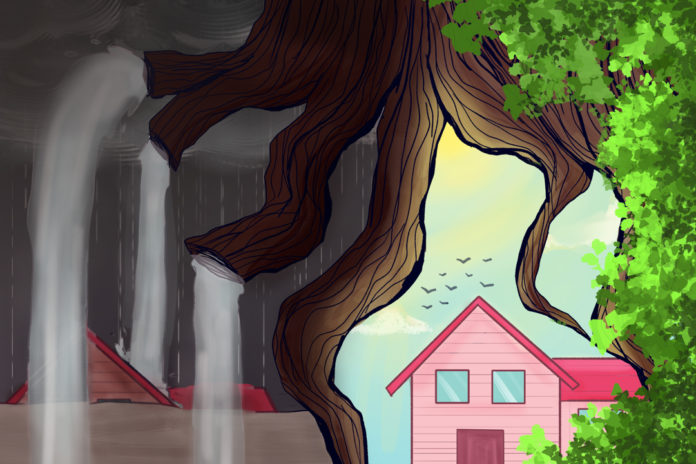After the vast flooding disaster in the Fraser Valley, and in response to the ever-impending threat of rising sea levels and record-breaking heat waves, it is clear that climate change needs to be addressed head-on. With these onset tragedies, the unfortunate truth becomes clear: this is only the beginning of a long, dreadful series of inconsistent weather patterns. There is, however, a window of hope during these trying times. It has been present in our landscape long before we stepped foot here and lingered for generations to keep our land stable: old growth.
British Columbia has a difficult history with preserving its vast forestry. According to the province, old growth is characterized as forests that vary in tree species, ecological function, and age. Because of human involvement, the old growth population in B.C. has vastly declined in the last 20 years, despite ecological demand. According to the B.C. Ministry of Forests, trees that are older than 120 – 140 years are considered old growth in the interior and 250 years in coastal rainforests — with some trees leveraging up to 1,000 years. There are 62 million acres of old growth in B.C. — the equivalent size of the United Kingdom or the state of Oregon. B.C.’s old growth forests account for 43 per cent of all B.C. forests.
By removing carbon emissions in our air, old growth forests reduce the amount of greenhouse gases in the environment and lessen the repercussions of climate change in the near future. With research gathered by the Pacific Northwest Research Station, the canopy provides a stable habitat for the delicate biodiversity, regulating the amount of rainfall by creating natural rivers and nursing the many plants that grow specifically under canopy openings. With these densely layered canopies, the covering can protect the soil below, which is a much-needed resource for fungal ecosystems to recycle minerals back into the old growth environment. Fallen wood that naturally decays from age is consumed by the forest floor, and dead, coarse, woody debris contains valuable organic matter that distributes carbon-rich nutrients into the soil, giving sustenance for fungi, mosses, and seedlings to feed on. They also house endangered species, such as the marbled murrelet and the Northern spotted owl. Without these animals, the ecosystem could collapse and threaten the already declining biodiversity.
While ongoing floods threaten topsoil stability, creating food insecurity and road closures, trees help to anchor topsoil by keeping it in place. According to Intact Forests, Safe Communities, trees can reduce the amount of water in the earth by soaking up rainfall and binding soil together with their roots. This protects the land from soil erosion, a situation that can occur when too much water accumulates on topsoil faster than it can absorb, which can escalate into torrents of immense water — a catastrophe we’re all too familiar with. Older woodland areas also help create and improve soil fertility. Anyone familiar with undergrowth will find that during rainfall, droplets will slide off of leaves and land gently on the forest floor. Rainwater on trees can also evaporate in the air, with the old growth environment acting like an absorbent sponge. This is an example of natural flood prevention, a mechanism used to lessen the rain’s impact on the ground floor and keep our ground intact. Often disturbed due to deforestation, without this intricate system roots are unable to retain soil composition, and stray water can travel off land to create mudslides.
Protecting old growth is critical for the health of our land, yet the province continues to enact mass deforestation projects. Wood is harvested and desired by logging industries for the potential profit they contain, from valuable minerals in the timber to premium products that require lumber. Loggers are responsible for the 200,000 hectares of forest in B.C. that are harvested each year. While companies continue to harvest these natural resources, protestors on Vancouver Island are fighting tooth and nail to stop the logging of old growth trees on Indigenous land.
B.C.’s landscape continues to decline with forest fires, floodings, and heatwaves — all within the same year. To ensure that B.C. remains intact and its natural resources unexploited, you can support local nonprofit organizations such as the Ancient Forest Alliance, who call for a “science-based plan to protect the endangered old growth forests in the province,” as mentioned on their website.
Image: Danyka Van Santen/The Cascade


